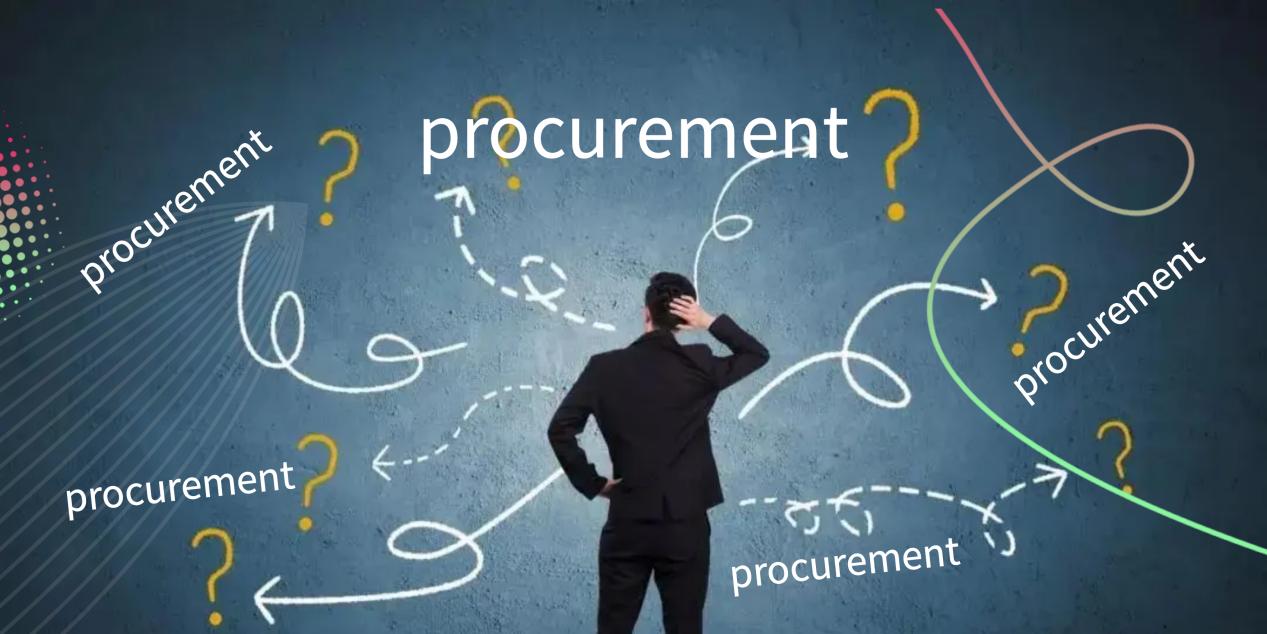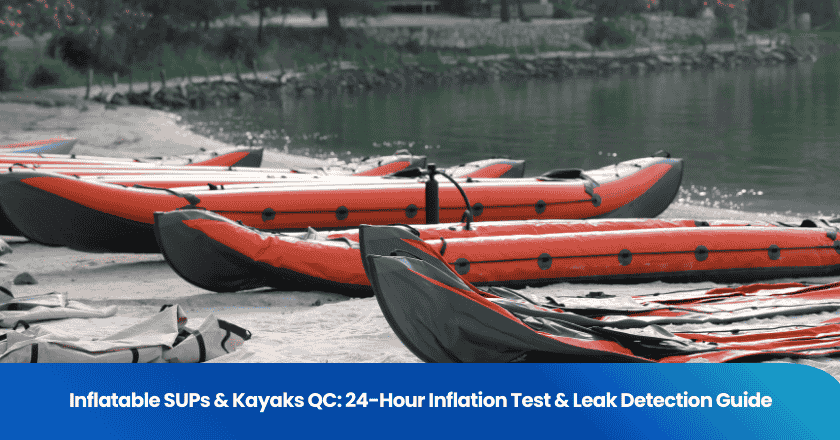
The basic meaning of procurement
Procurement refers to the act of obtaining products or services from the supply market by companies or individuals to meet the needs of production, operation, or consumption. In modern business environments, procurement is not just a simple purchasing behavior, but also involves market analysis, supplier management, negotiation strategies, contract management, and quality control among other aspects.
The main steps of the procurement process
1. Requirement Identification: Define the specific needs of the procurement, including product specifications, quantity, quality requirements, delivery time, etc. Analyze the business objectives behind the requirements to ensure that the procurement activities are aligned with the company's strategy.
2. Market research: Analyze market trends, understand the market prices, supply situation, competitive landscape, etc. of products or services. Collect information on potential suppliers, including their product quality, production capacity, delivery ability, service support, etc.
3. Supplier Selection: Based on the requirements and the results of market research, select potential suppliers that meet the criteria. Further evaluate the supplier's cost-effectiveness and overall capabilities through methods such as bidding, inquiry, and comparison of quotations.
4. Negotiation and contract signing: Negotiate with the selected supplier to reach an agreement on terms such as price, delivery date, payment method, quality standards, etc. Sign a formal procurement contract to clarify the rights and obligations of both parties and ensure the smooth progress of the procurement activities.
5. Order processing: According to the contract requirements, place procurement orders with suppliers. Track the execution status of the order to ensure that the supplier delivers on time and quality.
6. Delivery and Payment: Verify the products or services delivered by the supplier to ensure they meet the contract requirements. Pay the supplier according to the payment method agreed upon in the contract.
7. Supplier performance evaluation: Evaluate the performance of suppliers in terms of delivery time, product quality, after-sales service, etc. Based on the evaluation results, reward or punish suppliers to motivate them to continuously improve and enhance service quality. Regularly review and adjust the supplier list, optimize the supply chain structure, and reduce procurement risks.
How to optimize the procurement strategy of a company
The importance of procurement strategy
An effective procurement strategy is crucial for a company as it directly impacts the company's costs, efficiency, and the flexibility of the supply chain. Here are the main benefits of optimizing the procurement strategy: By optimizing the procurement strategy, companies can reduce the cost of purchasing raw materials, components, or services, thereby enhancing the company's competitiveness. An effective procurement strategy can shorten the procurement cycle, reduce unnecessary delays, and improve overall operational efficiency. Optimizing the procurement strategy helps companies establish more stable and reliable supply chain relationships, reducing the risk of supply disruptions.
Key steps in developing procurement strategy
Evaluate the current procurement process: Review the existing procurement process to identify bottlenecks and inefficiencies. Collect and analyze historical procurement data to understand the performance in procurement cycle, cost, quality, etc.
Define objectives: Based on the overall strategy and business goals of the company, set specific objectives for the procurement strategy. Objectives may include cost reduction, shortening the procurement cycle, improving product quality, enhancing supply chain stability, etc.
Analysis of the market: Conduct an in-depth analysis of the procurement market to understand the dynamics of suppliers, price, quality, technology, etc. Through market research, identify potential suppliers and alternatives to provide a basis for the formulation of procurement strategies.
Select the appropriate procurement method: Choose the suitable procurement method based on procurement needs and market conditions. Common procurement methods include centralized procurement, decentralized procurement, e-procurement, long-term contracts, bidding, etc. Each method has its advantages and disadvantages, and companies need to make a choice based on actual conditions.
Continuous improvement: Regularly evaluate and adjust the procurement strategy to adapt to market changes and changes in corporate needs. By collecting and analyzing procurement data, identify problems and develop improvement measures. Encourage employees to put forward improvement suggestions and jointly promote the optimization of the procurement strategy.
In the process of optimizing procurement strategy, companies also need to pay attention to the following points:
Establishing stable supplier relationships: Establishing long-term, stable cooperative relationships with suppliers helps ensure the stability of supply, reduce costs, and improve quality.
Introduce advanced procurement technology: use information technology means, such as electronic procurement platforms, big data analysis, etc., to improve the efficiency and quality of the procurement process.
Strengthen the construction of the procurement team: improve the professional quality and skill level of the procurement team to ensure the effective implementation of procurement strategies.
Focus on risk management: During the procurement process, companies need to pay attention to potential risks, such as supply disruptions, price fluctuations, etc., and formulate corresponding countermeasures.
The rise of e-procurement: the digital transformation of modern procurement process
With the rapid development of information technology, electronic procurement platforms have emerged in the modern procurement field, leading a wave of digital transformation. The emergence of electronic procurement platforms has changed the traditional procurement model, bringing many conveniences to enterprises.
Over the past 26 years since the company was established, TradeAider has developed a large manufacturer database which contains over 2,200 partner factories. All these factories have been audited by TradeAider's specialists. Some of them have become the core suppliers of TradeAider.
We are pleased to open our this valuable asset and share it with our esteemed clientele. Full factory information and Audit Report of each factory can be viewed in TradeAider's Manufacturer Database. We sincerely hope our sincerity, transparency and confidence demonstrated here will be highly appreciated by our valued customers, and a trustful and fruitful business relationship be established.
Advantages of electronic procurement
Improving efficiency: The e-procurement platform adopts automated and intelligent technical means, which can quickly process a large amount of procurement data and information, greatly improving the procurement efficiency. At the same time, online bidding, order processing and other functions also shorten the procurement cycle, accelerating the operation pace of the enterprise.
Cost reduction: Through the electronic procurement platform, companies can expand the bidding scope, attract more suppliers to participate in the competition, and obtain more favorable prices. The platform can also help companies implement centralized procurement, bulk procurement and other strategies to further reduce the procurement cost.
Enhancing transparency: The e-procurement platform has a high degree of transparency, and all procurement information and transaction records can be viewed and traced on the platform. Transparency helps companies monitor the procurement process, prevent corruption, increase supplier trust, and promote long-term stable cooperation.
Improving supplier relationships: Generally, e-procurement platforms provide supplier management functions, allowing companies to establish long-term stable cooperative relationships with suppliers through the platform. The platform can also record supplier's transaction history, credit status and other information, providing a reference basis for companies to improve their relationship with suppliers.
The rise of e-procurement platforms has brought profound changes to the modern procurement field. Through digital transformation, companies can complete procurement activities more efficiently and conveniently, reduce costs, improve efficiency, enhance transparency, and improve relationships with suppliers. With the continuous advancement of technology and the changing needs of the market, the functions and advantages of e-procurement platforms will continue to be expanded and improved.
Negotiation skills in the procurement process
In the procurement process, negotiation skills are the key to ensuring a favorable agreement.
Here are several aspects to be aware of before, during, and after the negotiation:
1. Preparation for negotiation
Before negotiations, it is crucial to have a deep understanding of the target market. This includes grasping market price trends, competitors' procurement strategies, and suppliers' industry status. This information helps you formulate more targeted negotiation strategies. A comprehensive assessment of the supplier's financial status, production capacity, product quality, service level, and market reputation should be conducted. Understanding the supplier's strengths and weaknesses helps to better seize the initiative in negotiations. Define your negotiation objectives, including price, delivery time, payment methods, after-sales service, etc. At the same time, set a bottom line to ensure that it will not exceed your acceptable range under any circumstances.
2. Negotiation Strategy
At the beginning of the negotiation, strive to establish a mutual trust relationship with the other party. Through friendly exchanges and active communication, let the other party feel your sincerity and professionalism. Create a good negotiation atmosphere to lay a solid foundation for subsequent negotiations. During the negotiation process, make full use of market data, industry reports, and supplier analysis to support your point of view. Speak with facts and data to enhance your persuasive power and make it easier for the other party to accept your requirements. Negotiations may encounter various unexpected situations, requiring you to adjust your strategy at any time. On the basis of maintaining principles, make appropriate concessions or propose new solutions to reach an agreement acceptable to both parties.
3. Follow-up after negotiation
After the negotiation ends, promptly record the negotiation process and results, and assess the negotiation performance. Summarize the lessons learned from successes and failures to provide reference for future negotiations. After both parties reach a preliminary agreement, further confirm the contract details with the supplier, including price, delivery date, payment method, after-sales service, etc. Ensure the contract terms are clear and unambiguous to avoid subsequent disputes.
In the negotiation phase of the procurement process, thorough preparation, sound strategies, and effective follow-up are key to securing a favorable agreement. Through continuous learning and practice, you will gradually master these skills and achieve better results in negotiations.
Legal and compliance issues in the procurement process
In the procurement process, legal and compliance issues are important aspects that we often encounter and cannot be ignored by enterprises. To ensure the smooth progress of procurement activities and avoid possible legal risks, enterprises need to have a deep understanding of key laws and regulations and take corresponding compliance management measures. Here are some common legal and regulatory compliance management issues.
1. Key laws and regulations
Trade regulations: Procurement activities involving international trade must comply with relevant trade regulations, such as tariffs, quotas, licenses, etc. In addition, it is important to understand international trade agreements and rules to ensure that procurement activities conform to international practices.
Contract Law: The procurement contract is the core document in the procurement process, so companies need to understand the basic principles and provisions of contract law. Contract law stipulates the requirements for the formation, performance, modification, and termination of contracts, ensuring that companies can protect their own rights and interests during the signing and performance of contracts.
Intellectual Property Law: During the procurement process, companies need to pay special attention to intellectual property issues, including patents, trademarks, copyrights, etc. Companies should ensure that the purchased products or services do not infringe on the intellectual property rights of others, and clarify the ownership and use rights of intellectual property in the contract.
Anti-unfair competition law: Enterprises should avoid any unfair competition behaviors during the procurement process, such as false advertising, malicious price comparison, forced transactions, etc. Understanding the provisions of the anti-unfair competition law helps enterprises maintain a fair competitive market environment.
Other relevant regulations: Companies also need to pay attention to other regulations related to the procurement process, such as environmental protection laws, labor laws, tax laws, etc. Ensuring that procurement activities comply with the requirements of these regulations helps companies avoid potential legal risks.
2. Compliance Management
To ensure compliance in the procurement process, companies should take the following measures:
Establish a compliance system: Enterprises should formulate procurement compliance policies and procedures, clarify the legal requirements and compliance standards for procurement activities. Through institutionalized management, ensure that the procurement process complies with the requirements of laws and regulations.
Strengthen training: Provide legal training for procurement personnel to enhance their understanding of legal and compliance issues. Through training, enable procurement personnel to consciously abide by laws and regulations, and apply legal knowledge to solve problems in practical work.
Strict review: During the procurement process, companies should strictly review the qualifications and reputation of suppliers to ensure that they comply with laws, regulations, and business ethics. In addition, companies should carefully review the procurement contracts to ensure that the contract terms are legal and compliant.
Establish internal supervision mechanism: Enterprises should establish an internal supervision mechanism to conduct regular inspections and assessments of the procurement process. Through internal supervision, timely detect and correct violations in the procurement process to ensure the compliance of procurement activities.
Seek professional support: In cases involving complex legal issues or uncertainties, companies should seek the support of professional legal advisors. Through the guidance of professional legal advisors, companies can better cope with legal challenges and risks.
Understanding and complying with relevant laws and regulations is an important part of the procurement process for enterprises. By strengthening compliance management, enterprises can ensure the legality and compliance of procurement activities, reduce legal risks, and lay a solid foundation for the steady development of the enterprise.
The challenges and strategies of global procurement process
In today's globalization, global procurement has become an important strategy for many companies to obtain resources and reduce costs. While global procurement brings advantages, it also comes with a series of challenges.
Logistics and transportation
Global procurement involves cross-border logistics and transportation, which may lead to longer delivery times, increased transportation costs, and the risk of damage and loss of goods. Differences in logistics infrastructure and service levels in different countries and regions further increase the complexity of logistics management.
cultural difference
During the global procurement process, companies need to communicate and collaborate with suppliers and customers from different cultural backgrounds. Cultural differences can lead to communication barriers, misunderstandings, and conflicts, affecting the smooth progress of procurement activities.
Legal compliance
Laws and regulations vary among different countries and regions. Companies need to comply with the laws and regulations of each country during the global procurement process, including trade controls, taxation, intellectual property protection, etc. This requires companies to have a high level of legal awareness and compliance capabilities.
Strategies for Handling Global Procurement Challenges
Establish a global procurement network
Enterprises should actively establish a global procurement network and establish long-term stable cooperative relationships with suppliers from multiple countries and regions. Reduce dependence on a single supply source and improve the flexibility and stability of the supply chain.
Strengthen logistics management
companies should strengthen the management of the global procurement logistics, including choosing the appropriate mode of transportation, optimizing transportation routes, improving the standards of goods packaging and labeling, etc. Enterprises should cooperate with professional logistics companies to improve logistics efficiency and reduce transportation costs.
Training team cross-cultural communication skills
Enterprises should pay attention to training team members' cross-cultural communication skills, including language skills, cultural sensitivity, and communication skills. Through training, improve team members' ability to communicate with suppliers and customers from different cultural backgrounds, reducing communication barriers and misunderstandings.
Understand and comply with the laws and regulations of various countries
During the global procurement process, companies should understand and comply with the laws and regulations of various countries to ensure the legality and compliance of procurement activities. Companies can hire professional legal advisors or consulting institutions to provide legal support and compliance guidance.
Grow your business with TradeAider Service
Click the button below to directly enter the TradeAider Service System. The simple steps from booking and payment to receiving reports are easy to operate.



